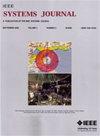Average Sparse Attention for Dense Video Captioning From Multiperspective Edge-Computing Cameras
IF 4.4
3区 计算机科学
Q1 COMPUTER SCIENCE, INFORMATION SYSTEMS
引用次数: 0
Abstract
In recent years, the artificial intelligence of things (AIoT) has accelerated the development of edge computing. Since existing edge computing for dense video captioning has only explored single-camera decision-making, we propose a lightweight image stitching model that uses a proposed inverted pruned residual model to realize multicamera decision-making to generate more accurate captions. Existing dense video captioning uses an intensive attention mechanism, which readily results in the loss of important information. Thus, our study proposes an average sparse attention mechanism such that the resultant dense video-captioning model is better able to focus on important information and improve the quality of its generated captions. The experiments show that the lightweight video stitching model can reduce model parameters by 13.40% and increase frames per second by 28.96% on an edge platform when compared to the latest studies. Furthermore, a dense video caption network with the average sparse attention mechanism yielded improvements of 22.97% for BLEU3, 35.04% for BLEU4, and 7.51% for METEOR.基于多视角边缘计算相机的密集视频字幕的平均稀疏注意
近年来,物联网人工智能(AIoT)加速了边缘计算的发展。由于现有的密集视频字幕边缘计算只探索了单摄像头的决策,我们提出了一种轻量级的图像拼接模型,该模型使用所提出的倒修剪残差模型来实现多摄像头的决策,以生成更准确的字幕。现有的密集视频字幕使用了密集注意机制,容易导致重要信息的丢失。因此,我们的研究提出了一种平均稀疏注意机制,使得生成的密集视频字幕模型能够更好地关注重要信息并提高其生成字幕的质量。实验表明,与最新研究相比,轻量级视频拼接模型在边缘平台上的模型参数减少了13.40%,帧数每秒增加了28.96%。此外,具有平均稀疏注意机制的密集视频字幕网络,BLEU3的改进率为22.97%,BLEU4为35.04%,METEOR为7.51%。
本文章由计算机程序翻译,如有差异,请以英文原文为准。
求助全文
约1分钟内获得全文
求助全文
来源期刊

IEEE Systems Journal
工程技术-电信学
CiteScore
9.80
自引率
6.80%
发文量
572
审稿时长
4.9 months
期刊介绍:
This publication provides a systems-level, focused forum for application-oriented manuscripts that address complex systems and system-of-systems of national and global significance. It intends to encourage and facilitate cooperation and interaction among IEEE Societies with systems-level and systems engineering interest, and to attract non-IEEE contributors and readers from around the globe. Our IEEE Systems Council job is to address issues in new ways that are not solvable in the domains of the existing IEEE or other societies or global organizations. These problems do not fit within traditional hierarchical boundaries. For example, disaster response such as that triggered by Hurricane Katrina, tsunamis, or current volcanic eruptions is not solvable by pure engineering solutions. We need to think about changing and enlarging the paradigm to include systems issues.
 求助内容:
求助内容: 应助结果提醒方式:
应助结果提醒方式:


